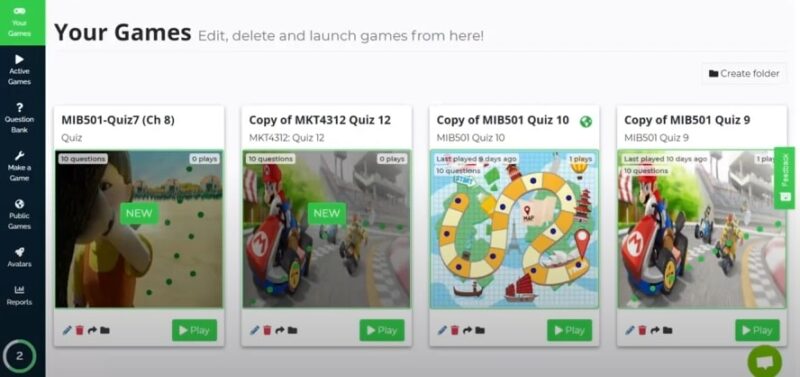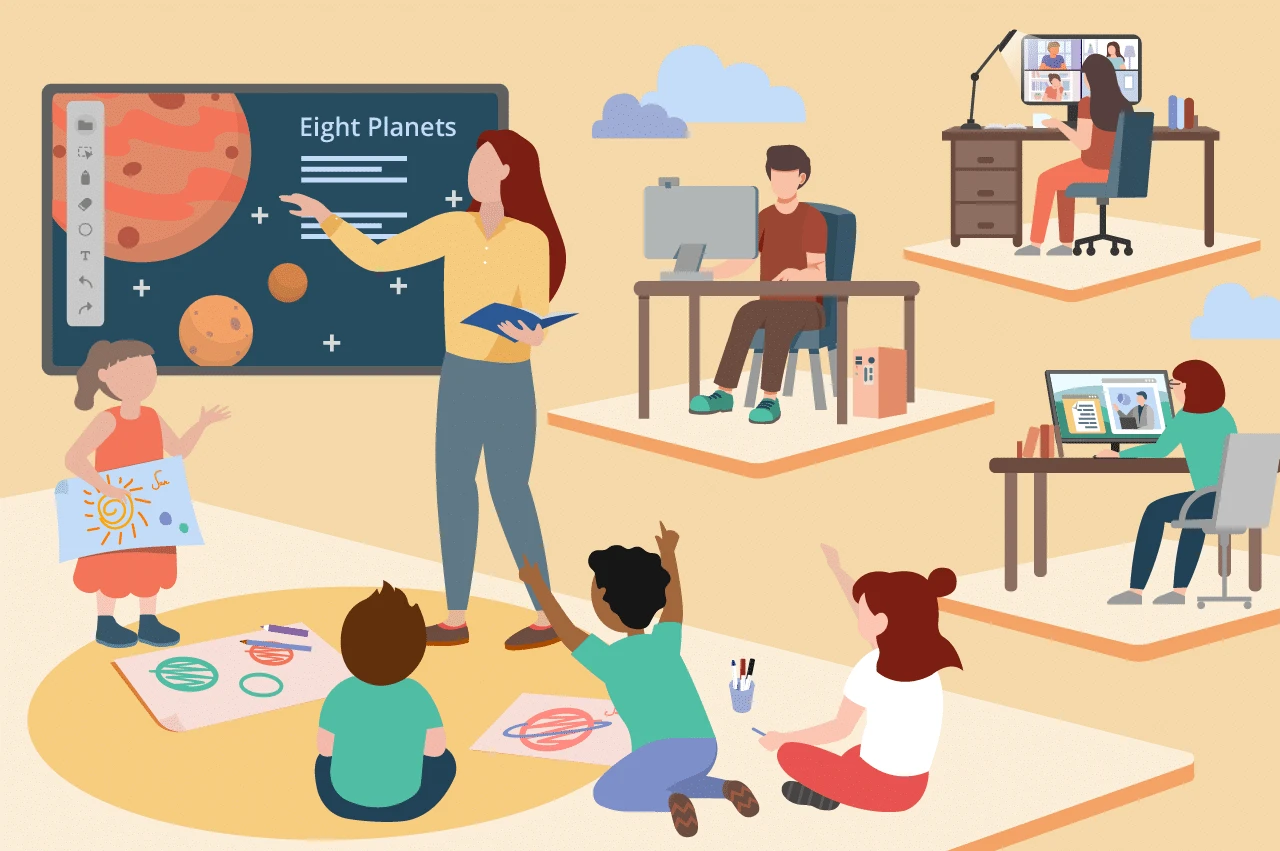Blended learning is a concept that combines two different approaches in a classroom. The combination consists of traditional methods with online activities and materials.
We can all agree that this concept is the most widespread one at the moment.
There is practically no school out there that doesn’t have at least a small percentage of it.
But what are the best practices to use the online learning platforms in this concept?
Let’s find out.
Personalization and Differentiation
Blended learning enables educators to tailor instruction to meet students’ needs, promoting a more personalized learning experience.
By choosing an adaptive learning platform carefully, teachers can create customized learning pathways that adjust content and pace based on each student’s progress and performance.
Personalization in blended learning also involves using online assessments to gauge student understanding and adjust instruction accordingly.
These assessments provide immediate feedback, allowing educators to identify areas where students may be struggling and provide targeted interventions.
Blended learning supports differentiation by offering a variety of learning activities and resources, catering to different learning styles and preferences.
For example, visual learners can benefit from video content, while kinesthetic learners may prefer interactive simulations or hands-on activities.
Gamification in Blended Learning

Gamification involves including game elements to boost student engagement and motivation, such as:
- Points
- Badges
- Leaderboards
In a blended learning environment, gamification can make learning more enjoyable and interactive, encouraging students to actively participate and persist through challenges.
Educational games can be used across various subjects to reinforce classroom learning.
For instance, math games can help students practice problem-solving skills, while language arts games can enhance vocabulary and reading comprehension.
These games often include immediate feedback and rewards, which can motivate students to improve their performance and strive for mastery.
Interactive game-based activities can also be integrated into classroom instruction to complement traditional teaching methods.
For example, teachers can use quiz-based games to review content, promote healthy competition, and encourage collaboration among students.
Encouraging Interactive Communication

Collaboration is a crucial component of blended learning, as it promotes deeper understanding and knowledge retention.
Utilizing online tools enables students to communicate and work together on projects, regardless of their location.
Online tools are numerous, but the commonest ones are:
- Discussion forums
- Wikis
- Collaborative documents
These tools facilitate asynchronous communication, allowing students to contribute to discussions and collaborate at their own pace.
Group projects in a blended learning environment can benefit from the use of these online tools.
For instance, students can work together on a shared document, provide feedback on each other’s work, and participate in virtual meetings to discuss project progress.
Online discussion forums also provide a platform for students to ask questions, share insights, and engage in meaningful conversations about course content.
Facilitating online discussions requires careful planning and moderation by educators to ensure that all students have the opportunity to participate and that discussions remain focused and respectful.
Various Blended Learning Models
Blended learning encompasses several models, each with its unique approach and advantages.
Knowing all about these models helps educators choose the best fit for their instructional goals and student needs.
The best-known ones are:
- Flipped Classroom
- Rotation Model
- Flex Model
Flipped Classroom
In this model, students watch lectures and access instructional materials at home, often through videos or online modules.
Classroom time is then dedicated to interactive activities, such as discussions, problem-solving, and hands-on projects.
Rotational Model
Students rotate between different learning stations, which can include online activities, teacher-led instruction, and collaborative group work.
Flex Model
This model offers students greater control over their learning pace and environment.
Students primarily engage with online content, but have access to teachers for support and guidance as needed.
Each of these has distinct advantages and can be tailored to suit various educational contexts.
Leveraging Data and Analytics
Data and analytics play a crucial role in blended learning by providing insights into student performance and progress.
By collecting and analyzing data from various sources, educators can make informed decisions about instructional strategies and interventions.
Learning management systems (LMS) are valuable tools for tracking student performance and engagement.
These platforms collect data on student activity, like:
- Quiz scores
- Assignment submissions
- Online discussions
Educators can use this data to identify patterns and trends, such as which students are struggling with specific concepts or which instructional materials are most effective.
Using data to inform instruction allows educators to provide targeted support to students who need it most.
For example, if data indicates that a student is having difficulty with a particular topic, the teacher can offer additional resources or one-on-one tutoring to address the issue.
Data-driven instruction also enables educators to continuously improve their courses by identifying areas for improvement and making necessary adjustments.
Online Office Hours

Providing one-on-one interaction opportunities is essential in a blended learning environment.
Online office hours offer students the chance to seek help, ask questions, and receive personalized support outside of regular class time.
Scheduling regular online office hours can enhance communication between students and teachers.
These sessions can be conducted through various communication mediums, like:
- Instant messaging
- Video conferencing
Video conferencing, in particular, allows for face-to-face interactions, which can help build rapport and foster a sense of connection between students and teachers.
Online office hours also provide flexibility for students who may have scheduling conflicts or other commitments that prevent them from attending in-person office hours.
By offering multiple ways for students to reach out, educators can ensure that all students have access to the support they need to succeed.
Performance Tracking to Improve Content
![]()
Analyzing learner performance is key to improving course content and ensuring that it meets students’ needs.
By examining data on student performance, educators can identify trends and areas for improvement, making informed decisions about instructional strategies and content updates.
E-learning platforms offer various tools for tracking student performance, such as quizzes, assignments, and participation in online activities.
For example, if a significant number of students perform poorly on a particular quiz, the instructor may need to revisit that topic and provide additional resources or explanations.
Performance tracking also helps educators identify which instructional materials are most effective.
The Bottom Line
Before you are ready to undergo blended education, knowing what are the best practices will certainly pay off.
That is why I presented you with the best practices out there.
Related Posts:
- Top 10 Online Learning Platforms for Blended Education
- Top Blended Learning Models for Effective Education…
- How to Incorporate Collaborative Learning in a…
- How to Integrate Online and Traditional Learning for…
- Step-by-Step Guide to Creating a Blended Learning Curriculum
- Essential Tools for Digital Literacy in a Blended…








